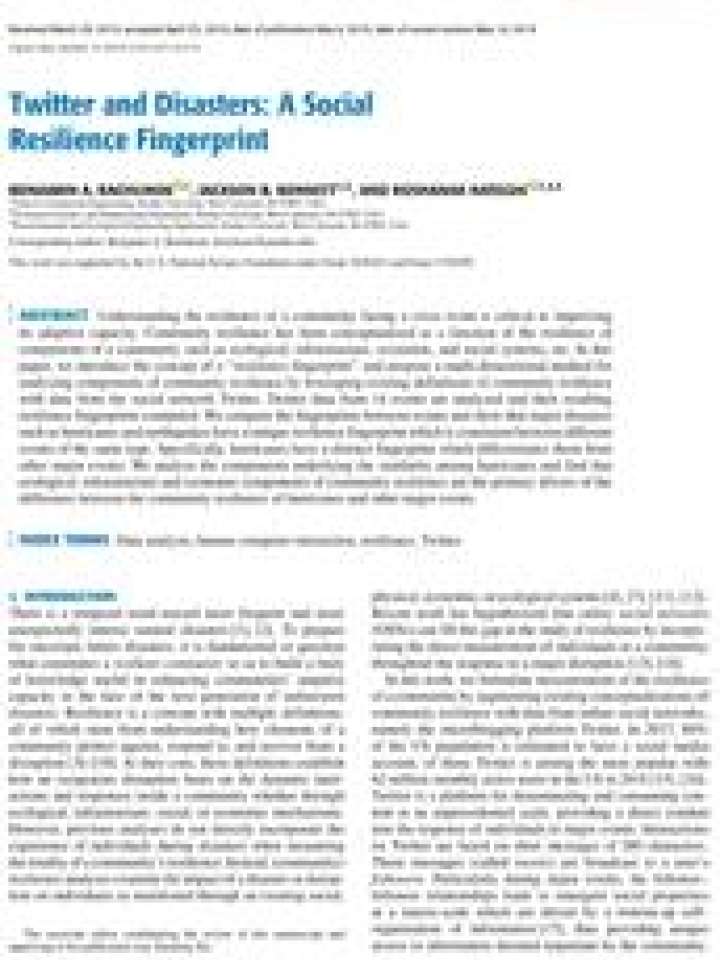Twitter and disasters: A social resilience fingerprint
Understanding the resilience of a community facing a crisis event is critical to improving its adaptive capacity. Community resilience has been conceptualized as a function of the resilience of components of a community such as ecological, infrastructure, economic, and social systems, etc. In this paper, the authors introduce the concept of a “resilience fingerprint” and propose a multi-dimensional method for analyzing components of community resilience by leveraging existing definitions of community resilience with data from the social network Twitter. Twitter data from 14 events are analyzed and their resulting resilience fingerprints computed.
The paper compares the fingerprints between events and shows that major disasters such as hurricanes and earthquakes have a unique resilience fingerprint which is consistent between different events of the same type. Specifically, hurricanes have a distinct fingerprint which differentiates them from other major events. The authors analyze the components underlying the similarity among hurricanes and find that ecological, infrastructure and economic components of community resilience are the primary drivers of the difference between the community resilience of hurricanes and other major events.
Explore further
